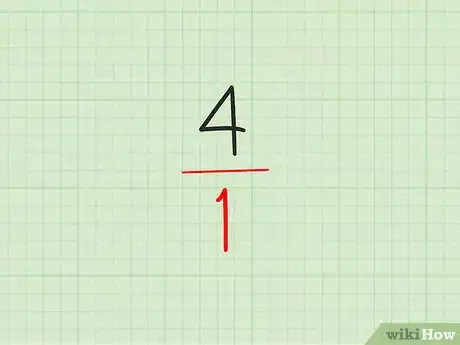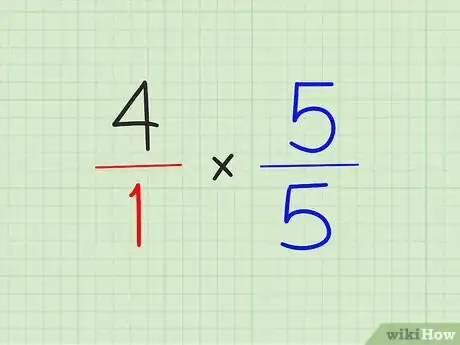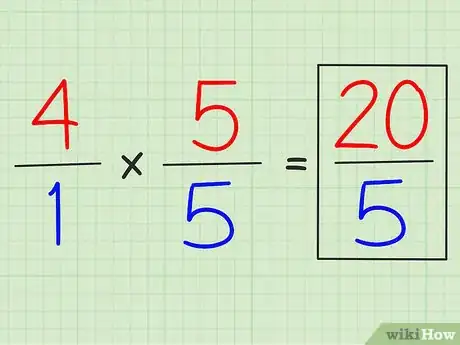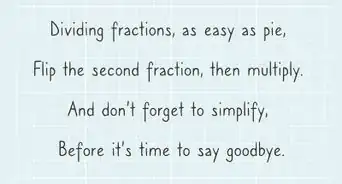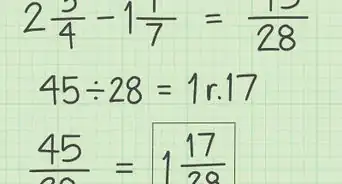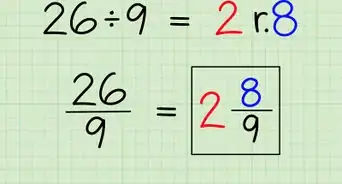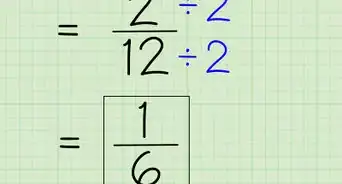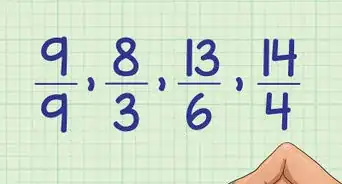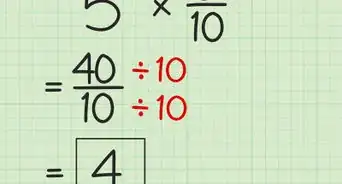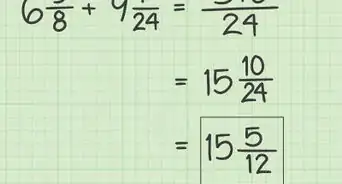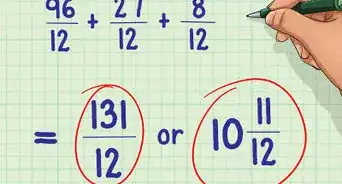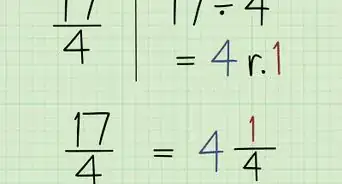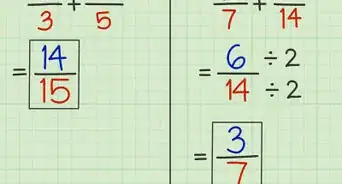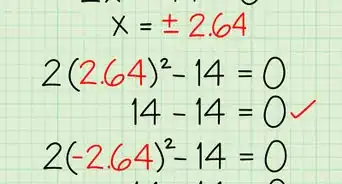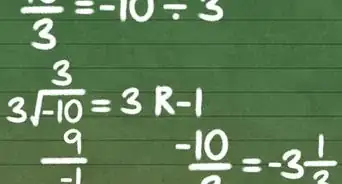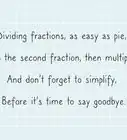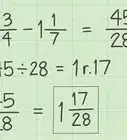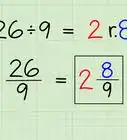X
wikiHow is a “wiki,” similar to Wikipedia, which means that many of our articles are co-written by multiple authors. To create this article, volunteer authors worked to edit and improve it over time.
This article has been viewed 73,766 times.
Learn more...
You probably know that you can easily convert a whole number to an "improper" fraction by expressing the whole number as a numerator and choosing 1 as the denominator. That would be a "reduced" improper fraction. It's also easy to convert a whole number to an unreduced improper fraction. Here's how:
Steps
-
1Express the whole number as a reduced proper fraction. The whole number is the numerator, and 1 is the denominator. For example, if the whole number is 4, the numerator of the fraction is 4, and the denominator is 1. Thus, 4/1.[1]
-
2Choose any fraction equivalent to 1. A fraction is equivalent to 1 if its numerator is the same as its denominator. Examples are 3/3, 5/5, and 7/7.[2]Advertisement
-
3Multiply the whole number by the fractional equivalent of 1. Take the improper fraction chosen in Step 1 above. Multiply it by any fraction that equals 1. This does not change the value of the original improper fraction. For example, multiply 4/1 by 5/5 (numerator times numerator, and denominator times denominator). 4/1 multiplied by 5/5 equals 20/5. You now have an unreduced improper fraction with the value of 4.[3]
- Examples of improper fractions that equal 4 include 4/1, 8/2, 12/3, 16/4, 20/5 and 24/6. Note that in each fraction, the numerator is four times the denominator.
- If the original whole number had been, for instance, 5 rather than 4, the numerator of an equivalent improper fraction would be five times the denominator.
Advertisement
Community Q&A
-
QuestionHow could I make 4 into an improper fraction?
 Community AnswerSome examples of this would be 8/2, 12/3, and 16/4. Do this by using Steps 2 and 3 above.
Community AnswerSome examples of this would be 8/2, 12/3, and 16/4. Do this by using Steps 2 and 3 above. -
QuestionHow do you convert 15/6 into a whole number?
 Community AnswerIt will convert only into a mixed number, because 15 is not a multiple of 6. (18/6, for example, would convert into a whole number.)
Community AnswerIt will convert only into a mixed number, because 15 is not a multiple of 6. (18/6, for example, would convert into a whole number.) -
QuestionHow do I convert 3/4 into a whole number?
 DonaganTop Answerer3/4 will not convert into a whole number. The only fractions that can be converted into whole numbers are those whose numerators are the same number as their denominators, or whose numerators are an exact multiple of their denominators.
DonaganTop Answerer3/4 will not convert into a whole number. The only fractions that can be converted into whole numbers are those whose numerators are the same number as their denominators, or whose numerators are an exact multiple of their denominators.
Advertisement
References
About This Article
Advertisement
